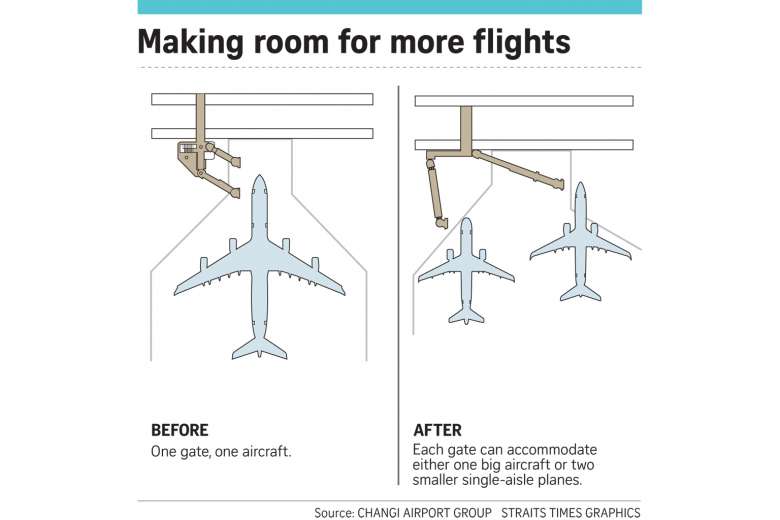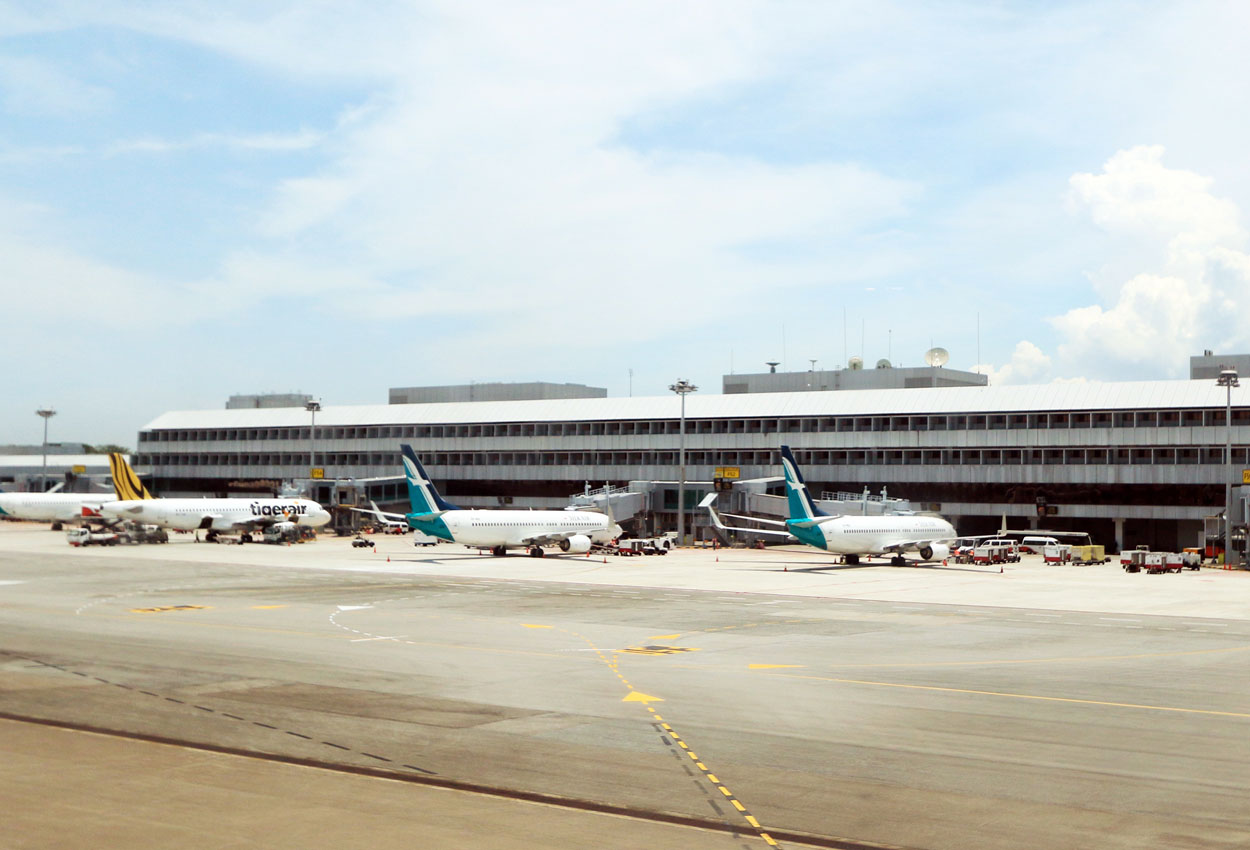Changi Airport is splitting some of its terminal gates to accommodate more flights and minimise the need to ferry travellers by bus to and from their planes.
At Terminal 2, four gatehold rooms, the area where passengers wait before boarding, have so far been split. Another four – two at T2 and two at T1 – will be modified next year, Changi Airport Group said.

This effectively doubles the capacity of each gate, which can then accommodate either one big aircraft or two smaller single-aisle planes.
Typically, each gate handles just one aircraft – big or small.
The move to add capacity comes as traffic volumes continue to rise at Changi Airport, which handled a record 55.4 million travellers last year. Between January and July this year, passenger traffic hit almost 34 million, a 7.7 per cent jump from the same seven months last year.
Changi Airport Group spokesman Ivan Tan said that while commercial flights are generally scheduled, there are occasionally last-minute changes to schedules which result in the need for gate allocation to be dynamic to prevent a bottleneck situation.
“On the whole, we aim to assign aircraft to contact gates as much as possible for the convenience of our passengers,” he said.
But in some instances, for example, when flights arrive late or during high peak periods, remote bays may have to be be used, he said.
With contact gates, passengers use aerobridges to board and disembark from aircraft. But when planes are parked farther away at remote bays, buses are needed to ferry them to and from the terminals.
The splitting of gatehold rooms will increase overall capacity and minimise such cases which happen occasionally, he said.
When T4 opens next year, the airport will also have an extra 21 gates.
Some flights, including those operated by Cathay Pacific and AirAsia, will move from the current terminals to the new facility.
“This will help spread traffic and free some of the capacity at T1, T2 and T3”, which will allow more flights to be docked at the gates, Mr Tan said.
Besides making space for planes at the gates, the airport is also adding aircraft parking spaces, which should decrease the number of flight delays if flights do not have to circle unnecessarily before landing.
In 2013, work to clear a plot of land – the size of over 40 football fields, which would be able to accommodate more than 30 single- aisle planes – began.
The 38.5ha stretch of land where T3 is used to house a plant nursery that has since been relocated, as well as a reservoir and a pond which have been backfilled.
The new parking area will be progressively opened from later this year.
When the project is completed by the end of the decade, about 215 planes will be able to park at Changi Airport at any one time, 24 per cent more than now, Mr Tan said.
Marketing executive Benjamin Tan, 49, said: “Compared to other major airports, it is really quite rare at Changi Airport for passengers to take buses to and from the terminals and planes, which is good because aerobridges are so much more convenient.
“As flight numbers increase though, I think we have to accept the fact that this could become more common.”

This article was first published on September 15, 2016.
Get a copy of The Straits Times or go to straitstimes.com for more stories.






